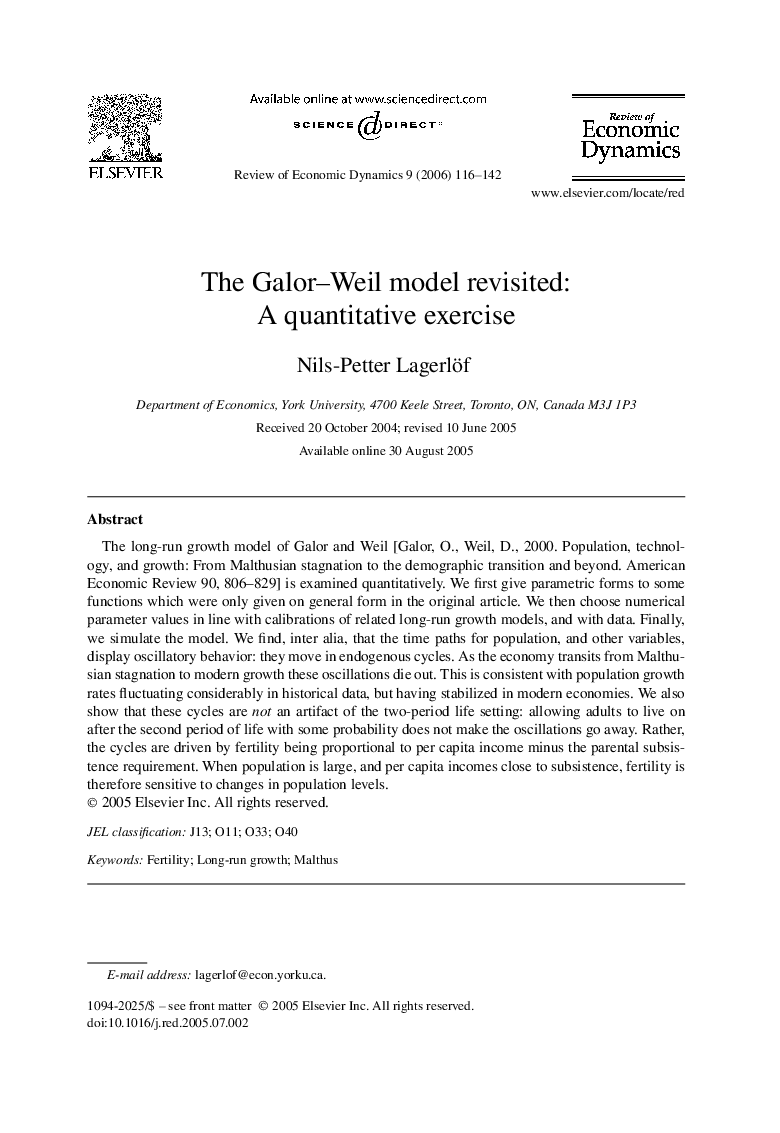| کد مقاله | کد نشریه | سال انتشار | مقاله انگلیسی | نسخه تمام متن |
|---|---|---|---|---|
| 986477 | 1480845 | 2006 | 27 صفحه PDF | دانلود رایگان |

The long-run growth model of Galor and Weil [Galor, O., Weil, D., 2000. Population, technology, and growth: From Malthusian stagnation to the demographic transition and beyond. American Economic Review 90, 806–829] is examined quantitatively. We first give parametric forms to some functions which were only given on general form in the original article. We then choose numerical parameter values in line with calibrations of related long-run growth models, and with data. Finally, we simulate the model. We find, inter alia, that the time paths for population, and other variables, display oscillatory behavior: they move in endogenous cycles. As the economy transits from Malthusian stagnation to modern growth these oscillations die out. This is consistent with population growth rates fluctuating considerably in historical data, but having stabilized in modern economies. We also show that these cycles are not an artifact of the two-period life setting: allowing adults to live on after the second period of life with some probability does not make the oscillations go away. Rather, the cycles are driven by fertility being proportional to per capita income minus the parental subsistence requirement. When population is large, and per capita incomes close to subsistence, fertility is therefore sensitive to changes in population levels.
Journal: Review of Economic Dynamics - Volume 9, Issue 1, January 2006, Pages 116–142